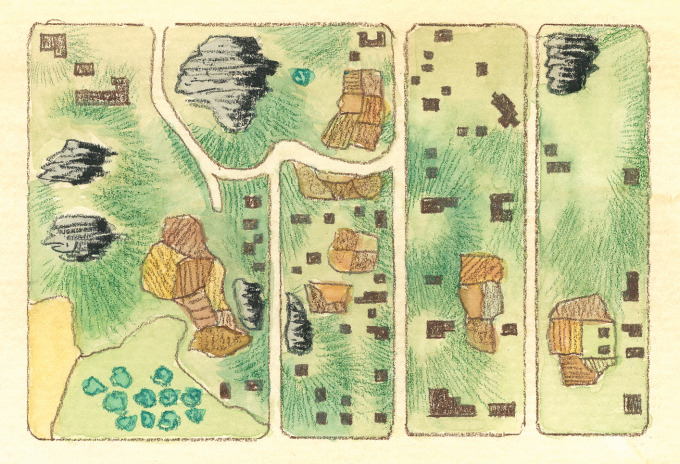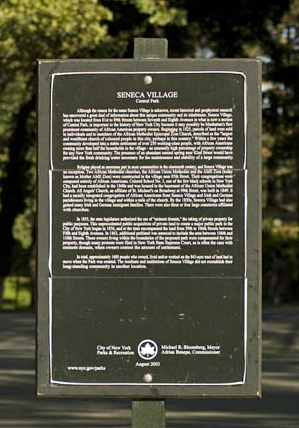I took a walking tour to an emotional place that doesn’t exist, the former Seneca Village in New York’s Central Park, a place where hope both dwelled and was crushed, in the nineteenth century.
As I followed one of the knowledgeable Central Park conservancy guides, I learned that Seneca Village was the first community of black property owners. In 1825, Josh and Elizabeth Whitehead bought a large track of land and sold lots to blacks for $125.00 a lot. As far as we know today, it was located on what is now Central Park West from approximately 82nd to 89th Streets. In 1826, there were 12,500 blacks in New York City. Although by 1810 ninety percent of New York blacks were free, slavery officially ended in New York State on July 4, 1827. Blacks made up half of the property owners, living right along with many Irish and German families. There were interracial marriages in Seneca per the burial and birth records.
Most blacks at Seneca were members of two African Methodist Episcopal Churches— Zion Church and African Union Methodist, which had a school for black children in its basement. Eventually, up to 1,600 people “owned, lived, or worked on the 843-acre tract of land,” according to the Central Park Conservancy, although the 1855 census showed only 264 official residents in the village. It also showed 100 Seneca residents were qualified to vote, as in order to vote Blacks had to own property worth at least $250.00.
As we walked along the same trails those enterprising souls walked, we paused at the only natural spring in Central Park today. Although not flowing much this day, I could imagine the hard working women of the village walking to fill their water jugs there, even in the midst of a harsh winter winter and a wave of awe swept through me.
The origin of the name is unclear, some attribute it to the Roman philosopher, Lucius Annaeus Seneca, while others say it was named after Seneca Falls, an upstate New York town. Another version attributes the name to the Seneca Nation, a Native-American tribe.
Seneca Village’s death knell sounded when the New York State Legislature authorized the purchasing of private property for public purposes to make way for what is now Central Park and the village was razed in 1857.
City University of NY and Columbia University have conducted excavations in the site and a marker on Central Park West and 85th Street now honors the pioneering spirit of the residents of Seneca Village. I wish we knew more about this little-know piece of New york City history.


